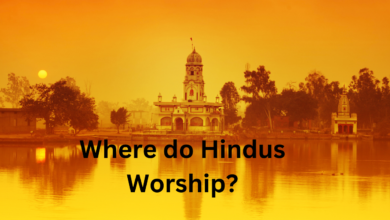What God looks like? |Unraveling Truth|2023
The Multifaceted Faces of the Divine

What God looks like?
No, the appearance of God is a topic of great theological debate. Many believe that God’s nature transcends physical form, making it impossible for humans to depict or comprehend His appearance.
Introduction – What God looks like
The question of what God looks like has intrigued humanity for centuries. It’s a topic that has sparked countless debates, discussions, and artistic interpretations. While there is no definitive answer to this question, various religious and philosophical traditions offer unique insights into the concept of God’s appearance.

Why did God Harden Pharohs Heart?
The Nature of God
God, as understood in many monotheistic religions such as Christianity, Islam, and Judaism, is often described as a divine being beyond human comprehension. In these faiths, God is believed to be formless and transcendent, existing outside the bounds of time and space. Therefore, any attempt to depict God visually is considered inadequate.
Metaphorical Representations
Throughout history, humans have used metaphors and symbols to represent God’s attributes and qualities. For example, in Christianity, God is often depicted metaphorically as a shepherd, a father, or a guiding light. These representations are not meant to be taken literally but serve as ways to help believers understand God’s character and relationship with humanity.
Cultural and Artistic Depictions
Different cultures and artistic traditions have created diverse visual representations of God. In Hinduism, for instance, there are countless depictions of deities with multiple arms, heads, and intricate symbolism. These images represent various aspects of the divine but are not considered literal representations of God’s physical form.
The Human Desire for Visual Understanding
Human beings have an innate desire to understand and relate to the divine in tangible ways. This has led to the creation of anthropomorphic depictions of God in art and literature. In Western art, God is sometimes portrayed as an elderly man with a flowing white beard, seated in the heavens. While these images are iconic, they are not definitive depictions but rather artistic interpretations.
Can we truly know what God looks like?
No, the appearance of God is a topic of great theological debate. Many believe that God’s nature transcends physical form, making it impossible for humans to depict or comprehend His appearance.
Why are there various depictions of God in art and literature?
Different cultures and religions have their own artistic interpretations of God, often based on their religious texts and traditions. These depictions are symbolic and serve as a way to connect with the divine.
Does the Bible provide any description of God’s appearance?
The Bible primarily uses metaphorical and symbolic language to describe God, emphasizing qualities like omnipotence, omnipresence, and love. It does not offer a detailed physical description of God’s appearance.
Are there religious texts or traditions that claim to describe God’s physical form?
Some religious texts and traditions, like Hinduism and certain mystical interpretations of Islam, offer descriptions of God’s form, often in symbolic or abstract terms. However, these are specific to their respective belief systems.
Why do some people believe in anthropomorphic depictions of God?
Anthropomorphic depictions of God, where God is depicted with human-like features, are common in some religious traditions. This can help believers relate to God on a more personal level, but it’s important to understand that these depictions are symbolic and not literal.
The Danger of Literal Interpretations
It’s important to note that taking these artistic representations too literally can lead to misunderstandings and conflicts. Many religious traditions caution against idolatry, emphasizing that God cannot be confined to any physical form or representation. Such literal interpretations can limit our understanding of the divine.
The Role of Faith and Belief
Ultimately, the question of what God looks like is a matter of personal faith and belief. In many religions, faith is considered the means by which individuals connect with the divine. The focus is on experiencing God’s presence in one’s heart and soul rather than attempting to visualize God’s physical form.
Conclusion
In the end, the concept of what God looks like remains a mystery that transcends human understanding. While various cultural, artistic, and metaphorical representations have been created to help us grasp the divine, they are not definitive answers. Instead, they serve as reminders of the profound nature of the divine and the limitations of human comprehension. Ultimately, the pursuit of a deeper spiritual connection with God is a journey guided by faith, not by visual depictions.
Regenerate
Can individuals have personal experiences of God’s appearance?
Some individuals claim to have had personal spiritual experiences where they perceive God in a certain form. These experiences are highly subjective and can vary widely from person to person.
Is it necessary to know what God looks like to have faith or a spiritual connection?
No, faith and spirituality are not dependent on knowing or visualizing God’s appearance. Many people find meaning and connection with the divine through their beliefs, actions, and personal experiences, rather than through a physical image of God.
How should we approach the question of God’s appearance in a diverse world with various belief systems?
It’s essential to approach this question with respect for the diversity of religious beliefs and practices. Different cultures and religions have their own perspectives on God’s appearance, and what matters most is the spiritual and moral values that people derive from their faith, rather than a specific image of God.





